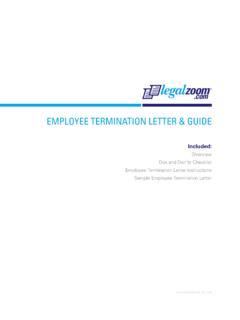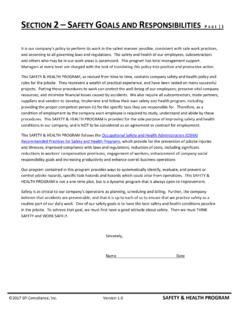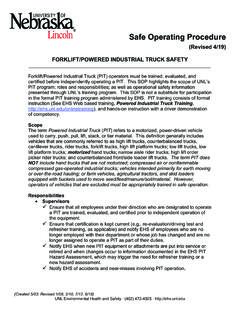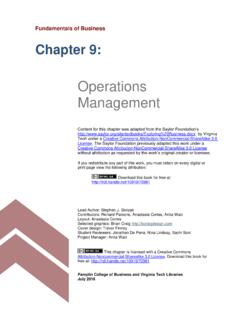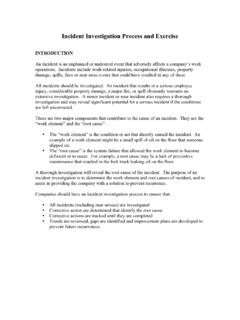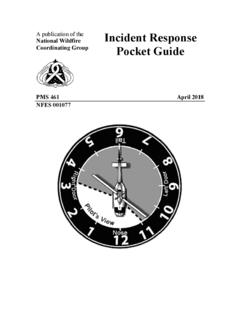Transcription of GENERAL CONTRACTOR AGREEMENT (COST PLUS FEE) & …
1 GENERAL CONTRACTOR AGREEMENT (COST PLUS FEE) & GUIDEI ncluded:Overview Dos and Don ts Checklist GENERAL CONTRACTOR AGREEMENT (Cost Plus Fee) InstructionsSample GENERAL CONTRACTOR AGREEMENT (Cost Plus Fee) , INC. 2008 1 GENERAL CONTRACTOR AGREEMENT (COST PLUS FEE) , INC. 2008 1. Overview Hiring a GENERAL CONTRACTOR is a nerve-wracking experience for any home or property owner. This company or individual will be in charge of your entire project, whether it be completely new construction or a major remodeling, and the owner is putting one of its most valuable assets in someone else s hands. A good GENERAL CONTRACTOR AGREEMENT outlines the rights and responsibilities of the CONTRACTOR and the property owner. Vague, verbal agreements can lead to disputes and ill will.
2 It s best for all parties to detail their respective roles in writing before starting work. Your property is your haven. With the enclosed AGREEMENT , you can make sure it s in the hands of the right CONTRACTOR . The enclosed document can provide a good starting point for your GENERAL CONTRACTOR arrangement. You and your CONTRACTOR must continue to discuss the terms of your AGREEMENT , settling questions about work parameters, payment, and responsibilities. Once you have agreed on contract terms and have signed the attached form, each party can focus on its area of expertise--the company on the development of its business and the consultant on the services to be performed. 2. Dos & Don ts Checklist Not all states permit the use of cost-plus fee contracts.
3 Review your state and local regulations to make sure using this type of AGREEMENT is permissible in your area. State laws governing GENERAL contractors vary widely, and can have a tremendous effect on your contracting arrangement. In some cases, specific information must be included in the contract and in others, language must be excluded form your AGREEMENT . For example, certain states require that GENERAL CONTRACTOR agreements entered into for home improvement purposes include information about how to file a complaint against the CONTRACTOR with governmental bodies. In others, the contract may not waive your right to a jury trial or any provision of a relevant statute. Approximately thirty-six states prohibit certain CONTRACTOR acts, including the following: Abandoning a project Failing to perform as promised Misrepresenting essential facts Demanding or receiving payment before the contract is signed.
4 Consequences for these behaviors will vary from place to place. If you feel that your CONTRACTOR has or is violating your AGREEMENT , contact a lawyer in your area immediately. If you are hiring a CONTRACTOR to perform work around your home, you should do some preliminary research about necessary permits. Contact your county or city building department for details about building permits. Make sure you and your CONTRACTOR are on the same page about the permits needed and who will be obtaining CONTRACTOR AGREEMENT (COST PLUS FEE) , INC. 2008 Before selecting your CONTRACTOR , you should get at least three bids on the project and compare them. Have these prospective contractors create a line-item estimate, which breaks down the construction into all of its components.
5 Be picky find out how much each item adds to the total cost, what the labor costs will be, and how long each CONTRACTOR estimates it will take. Take your time in your evaluation. The lowest bid might be from an inexperienced or careless company. The highest may include unnecessarily expensive items. Although all elements of a contract are negotiable, do not delete provisions governing start and end dates, change orders, and lien waivers. The enclosed document is a cost-plus-fee contract. The CONTRACTOR under the AGREEMENT receives compensation equal to his or her expenses plus a bonus fee when the agreed-on work is completed. This is quite different from a fixed-price contract, in which the CONTRACTOR is paid the agreed-on amount, regardless of any added expenses that were incurred (unless otherwise agreed).
6 There are pros and cons to each type of contract. A CONTRACTOR under a cost-plus AGREEMENT has little incentive to cut costs if that CONTRACTOR will be reimbursed for every penny he or she spends, he or she might look for the highest-quality item without regard to its cost. On the other hand, with a fixed-price contract you will not need to micromanage your CONTRACTOR , keeping an eye to make sure only permissible costs are being incurred and billed. An essential element of cost-plus fee agreements is monitoring and documentation. Make sure the CONTRACTOR accounts for all expenses, and that the expenses it submits for reimbursement are permitted under the AGREEMENT . Note that many contractors have standard form agreements they use for every job, but an owner can still write in changes to create a workable AGREEMENT .
7 If a CONTRACTOR insists on using its own form, use the attached guide for information about what the clauses mean and whether or not they will work for you. Delete any clauses that are too restrictive or otherwise not in your best interests. Allow each party to spend time reviewing the AGREEMENT . This will reduce the likelihood, or at least the efficacy, of a claim that a party did not understand any terms or how those might affect the AGREEMENT as a whole. The enclosed document is drafted in a way that elevates the owner s interests over those of the CONTRACTOR . If you believe this AGREEMENT is too imbalanced for your purposes, or too restrictive to allow the CONTRACTOR to perform its duties, revise or restructure the provisions to fit your goals. Review your state s laws governing GENERAL contractors.
8 Certain provisions in the enclosed AGREEMENT may need to be strengthened or adapted to fit your state s rules. Check with your local Better Business Bureau to make sure that the CONTRACTOR does not have a history of dissatisfied customers. Ask for current references. Since both subcontractors and employees change over time, this gives a better measure of current capability and performance. Before sitting down to sign, decide exactly what your goals are for the AGREEMENT . Clarify the terms and conditions of your AGREEMENT before memorializing them in CONTRACTOR AGREEMENT (COST PLUS FEE) , INC. 2008 Both parties should review the completed AGREEMENT carefully to ensure that all relevant deal points have been included. It is better to be over -inclusive than under-inclusive.
9 Do not assume that certain expectations or terms are agreed to if they are not stated expressly on the document. If the GENERAL CONTRACTOR is providing you with a copy of their form AGREEMENT , review it carefully. The following types of clauses should be deleted, if possible, or revised to be less limiting for you: The Owner agrees to pay any increases in labor or material costs that may arise after the Effective Date of the AGREEMENT . If any of the specified materials are not available for any reason, the CONTRACTOR reserves the right to substitute with similar materials. Sign two copies of the AGREEMENT , one for you and one for the other party. Depending on the nature of its terms, you may decide to have your AGREEMENT witnessed or notarized. This will limit later challenges to the validity of a party s signature.
10 If your AGREEMENT is complicated, do not use the enclosed form. Contact an attorney to help you draft a document that will meet your specific needs. 3. GENERAL CONTRACTOR AGREEMENT (Cost Plus Fee) InstructionsThe following provision-by-provision instructions will help you understand the terms of your AGREEMENT . The numbers below ( , Section 1, Section 2, etc.) correspond to the provisions in the AGREEMENT . Please review the entire document before starting your step-by-step process. Introduction. Identifies the document as a GENERAL CONTRACTOR AGREEMENT . Write in the date on which the AGREEMENT will become effective (often the date on which it is signed). Identify the parties and, if applicable, what type of organization they are. Note that each party is given a name ( , Owner ) that will be used throughout the AGREEMENT .
